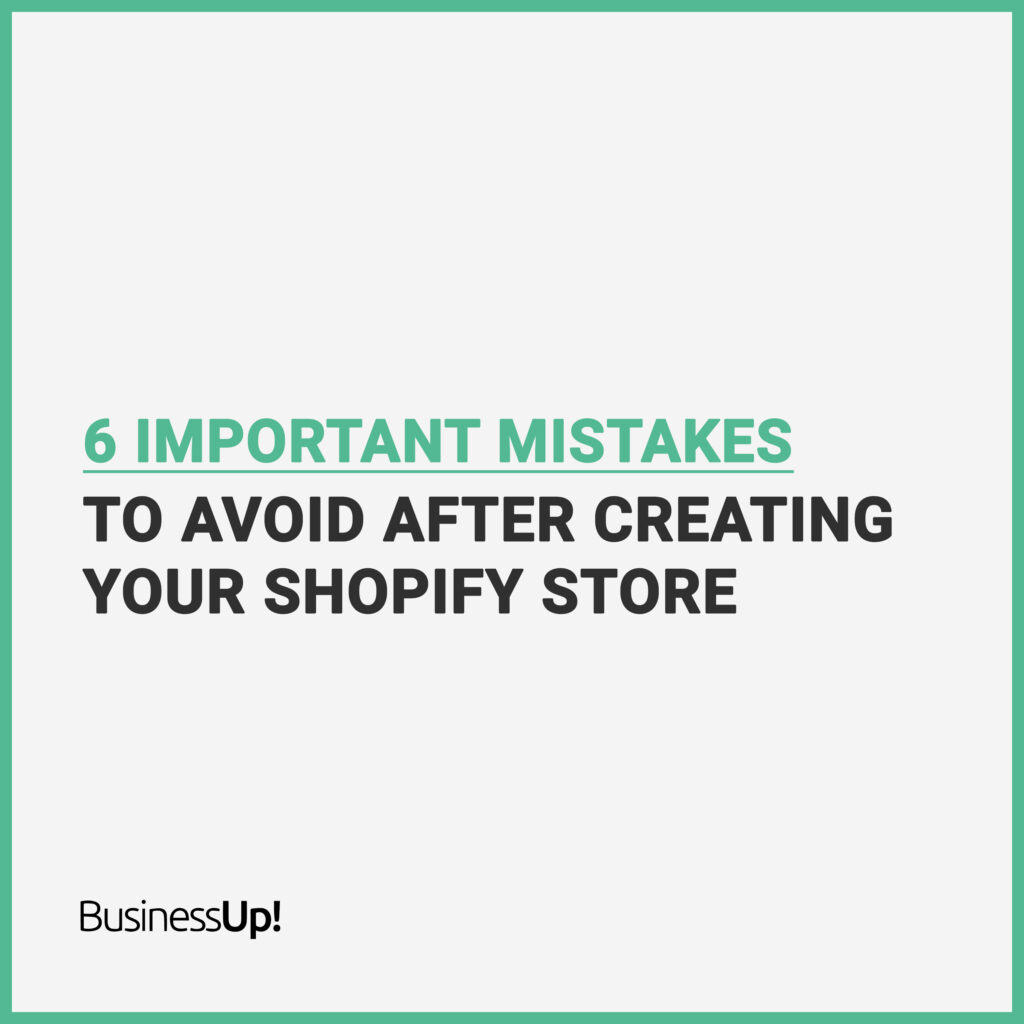
jQuery(".blogBaslik .elementor-heading-title").html(jQuery('.entry-title').html());
There are some mistakes you should avoid after the Shopify store is created. Avoiding these mistakes will allow you to be in a much better position in the e-commerce industry. We have brought together 6 important mistakes made after the Shopify store was created for you.
1 – High Shipping Fees
High or hidden shipping charges are one of the main reasons your potential customers leave your store without making a purchase. Recent research has proven that around 25% of customers abandon their shopping cart as soon as they notice high shipping charges on their orders.
We have to accept the fact that none of us likes to pay shipping when it comes to shopping. Make sure to keep shipping costs as low as possible, and if items are too expensive to ship, you can add the shipping cost to the item price. This solution will give your customers the impression of free shipping and on the other hand, it will not harm you. You should better understand your customer’s needs and requirements. Aim to provide products and services that give them a seamless experience.
2 – Keeping Default SEO Settings
Shopify optimizes each page with its default SEO settings. However, many people use search engines like Google and Bing to find what they want online. That’s why optimizing SEO for your products is crucial to reach as many people as possible without paying for ads. As a general rule, shop owners in Shopify optimize their stores, websites, brands, and products to be listed on the first page of search results when a user searches for a particular keyword or phrase. It is very important to use a set of natural links that show your store as an example on other websites. It’s also worth noting that SEO for a Shopify page or any other website for that matter is never a one-time job. As part of your SEO efforts, make sure you: Create a hierarchy and sitemap in your store, research the right keywords for your brand, target market, and products. Optimize store metadata for search engines and add alt text to images. Also make the store responsive and mobile friendly
3 – Having Unoptimized Images Causing High Loading Time
Search engine optimization has many rules and guidelines for how your images should be. Choosing the right image for your products can be difficult. However, it’s best to manually select images that won’t cause high loading times. Research reveals that websites should load within five seconds. Any time longer than five seconds can cost you a large number of customers. As part of compressing images, many developers tend to use 3rd party applications. This can do more harm than good to the overall quality of your store. Compressing images will have an impact on speed, quality and user experience. You may have to pay for each image compressed by the application. This negatively impacts the operating cost of your store.
4 – Incorrect and Insufficient Product Descriptions
Images play the role of products on the website, while product descriptions play the role of a sales representative in the eCommerce store.
An interesting product description can entice your customer to click the buy now button. Yet many store owners overlook the importance of a good product description. Instead of creating a new and believable product copy, they use the ones provided by the manufacturers.
Images give an idea about the appearance and colors of the product. A product description highlights important details such as weight, size, texture and benefits. When writing the product description, you can use a friendly and conversational style. You should avoid using complex or technical words. Also, do not use descriptions provided by manufacturers or suppliers. Never use plain, plain texts used by hundreds of other shopkeepers. Be sure to explain all product features. Use headings and bullet points to improve readability. Don’t forget to include primary keywords in your description to improve SEO.
5 – Not sharing product reviews and user experiences
Among so many online stores, customers want to know that they can trust you with their purchases. Social proof can help you gain that trust.
If someone isn’t familiar with your brand, one of the easiest ways to get them to trust you is to give them some social proof. Customers want to shop from brands they can trust. One of the easiest ways to show this on your online store is through customer reviews and product reviews.
In studies, 76% of consumers shared that they were less likely to buy from a seller without reviews. There is also an increase in shoddy, untrustworthy stores as online store setup is easier and cheaper than ever. Providing legitimate social proof is one of the most important ways to address any concerns a new customer may have.
While it may seem intimidating to open your products to reviews, if you provide quality products and services, let your happy customers speak for you and don’t be afraid to ask for that review. Find a way to ask, happy customers are much more likely to take the time to leave feedback. Add this call-to-action to your email funnel. For example, send your customer an email a week after they shop and ask how satisfied they are with their new product and direct them back to your site to leave a review.
“But what if I get a bad review? I don’t want to show it!” Negative feedback doesn’t always mean bad. The way you respond to your unhappy customer is a good opportunity to create new happy customers. When you respond publicly and quickly, people are ready to help them even if they run into an unlikely problem. they will make sure you will be there.
6 – Inactive customer service
Customer service is the cornerstone of a good business. Great customer service can make your company stand out from the rest, but poor customer service can have an equally big impact on business.
A few small mistakes can cause you to lose customers and build a bad reputation that is hard to make up for. Poor or no Customer Service means higher price dissatisfaction.
Exemplary customer service is one way your company can compete without offering lower prices than your competitors. Many customers ignore higher prices because they know they will get better customer service with their orders.
Imagine a customer who pays 20% more for a product and waits 30 minutes on the phone to ask your support team about your returns policy. The customer may wonder why he did not purchase the product at a lower price from a larger organization. This may seem unusual, but research shows that there is a 20% dissatisfaction rate among customers who experience a problem with customer service.
Customers won’t give your store a second chance, and more than half of shoppers won’t contact your business’s customer service team when they have a problem. Based on their previous customer service experience or reviews of your company, they may believe you cannot or will not help them.
When you provide great customer service, your store will gain a good reputation. Your customers will know that you can help them when they need instead of waiting for their complaints and will make them shop from you again. Additionally, your excellent customer service can persuade shoppers to return to your store despite the problems they face. They will know you are there to help them, so they will be more willing to come back to your store in the future.
Bad customer service spreads quickly among shoppers and affects your store. People often tend to discuss something they dislike rather than something that satisfies them. Many customers check a store’s reviews online before purchasing, and you can be sure that customers will report bad customer service experiences on review sites. Other customers will see this and it will negatively affect your sales.
If you want to carry out the design, digital advertising and SEO processes of your Shopify store professionally, you can contact us by filling out the form below.
Paylaş
Having Difficulty
Growing Your Brand?
Fill the form,
Let's see the result together.
Get a FREE
Brand Check-Up
